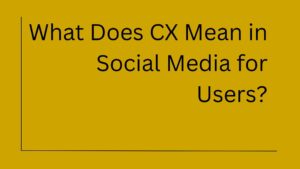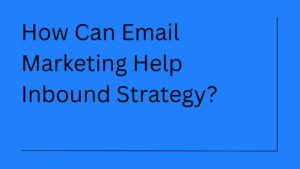Do you agree that grabbing attention isn’t enough in marketing—you’ve got to make it count? That’s where Below-the-Line (BTL) marketing comes in. While most people are familiar with big-budget TV ads and splashy billboards, BTL operates in a different world—one that’s quieter, more targeted, and often far more personal.
This guide isn’t just about defining what BTL marketing means. It’s about exploring where it fits, how it works, and why so many brands—big and small—are leaning into it. From in-store demos to direct mail to creative event experiences, BTL offers a hands-on way to connect with the people who actually matter: your customers.
Whether you’re new to the term or just trying to figure out how to use it more effectively, this comprehensive guide will walk you through everything you need to know about BTL advertising, with just enough real-world insight to keep things practical.
Let’s dive in.
Understanding Below-the-Line Marketing – The Meaning
Let’s start with the basics—what exactly is Below-the-Line (BTL) marketing?
BTL marketing refers to targeted promotional activities that don’t involve mass media. So, unlike TV, radio, or billboards (which shout to a crowd), BTL speaks more quietly—but directly—to a specific audience. It’s personal. Hands-on. Often face-to-face.
Think of things like in-store promotions, direct mail, email campaigns, product demos, or even branded kiosks at events. It’s about interaction more than exposure.
The goal? Building real relationships with consumers. BTL focuses on converting attention into action. And sometimes, that means engaging one customer at a time rather than trying to broadcast to millions.
It doesn’t mean BTL is “less than” traditional advertising—it’s just a different tool. A scalpel, not a megaphone. Precise. Flexible. And often, more cost-efficient when you know who you’re targeting.
But here’s what makes BTL particularly powerful in today’s market: it cuts through the noise. We’re bombarded with over 5,000 marketing messages daily. Most bounce right off us. BTL, when done right, doesn’t bounce. It sticks. Because it feels relevant, timely, and human.
History of Below the Line Marketing
BTL marketing has been around longer than most people realize. It began to emerge seriously in the mid-20th century when advertising agencies started categorizing marketing spend. Budgets spent on mass media—TV, print, radio—were marked as “above the line.” Everything else? Well, that went “below.”
The terminology stuck.
Originally, BTL methods were used mostly by consumer goods brands—think soft drink companies sending reps to hand out free samples at grocery stores. Over time, as markets grew more saturated and consumers became more skeptical, BTL evolved. It stopped being just a “support act” to big campaigns and started becoming a strategy of its own.
The real turning point came in the 1980s and 90s. Direct mail got sophisticated. Database marketing emerged. Suddenly, brands could track individual customer behavior, not just market segments. This wasn’t just evolution—it was revolution.
Then came the internet. Email marketing. Social media. Mobile phones. Each new channel gave BTL marketers more ways to reach people directly, personally, measurably.
Today, BTL is more relevant than ever. Especially with the rise of personalization, data-driven targeting, and customers expecting meaningful brand experiences, not just slogans or jingles. Privacy concerns have made mass data collection harder, but they’ve made targeted, permission-based marketing more valuable.
So, yeah, it’s come a long way from coupon booklets and scratch cards. Though, honestly? Those still work too.
Above-the-Line vs. Below-the-Line Advertising
Here’s where things get a little more nuanced.
Above-the-Line (ATL) marketing is all about reach. It’s the stuff you see everywhere—TV ads, radio spots, newspapers, social media ads (in some cases), and billboards. It’s designed to raise awareness, boost visibility, and create a broad brand impression.
BTL, on the other hand, is narrower in focus. It’s more about one-on-one engagement. Think experiential marketing, direct communication, or point-of-sale promotions.
Key Differences:
- Targeting: ATL hits wide; BTL hits specific.
- Measurement: BTL tends to be easier to track—you’re often looking at direct responses or interactions.
- Cost: ATL is expensive but high-reach. BTL is often cheaper per campaign, but it needs good targeting to be effective.
- Creative Freedom: ATL gives you broad messaging. BTL allows customization and adaptation in real-time.
But here’s something interesting: the lines are blurring. Digital advertising can be both ATL and BTL depending on how it’s used. A Facebook ad shown to millions? That’s ATL. The same ad, personalized and shown only to people who visited your website? That’s BTL territory.
The truth? Most successful brands don’t pick sides. They blend ATL and BTL into what’s sometimes called “Through-the-Line” (TTL) marketing. But more on that later.
Types of BTL Marketing
BTL isn’t just one thing. It’s a toolkit with several go-to tactics, each useful in different contexts.
1. Direct Marketing
This includes emails, SMS campaigns, or even snail mail. It’s personal and ideally customized. When done well, it doesn’t feel like an ad—it feels like a conversation.
The secret sauce? Relevance. A generic “Dear Customer” email gets deleted. But an email that references your last purchase, suggests complementary products, or acknowledges your birthday? That gets opened. Maybe even acted upon.
2. Sales Promotions
Coupons, limited-time discounts, cashback offers, contests—you’ve seen them all. These give people a nudge to buy right now, not later.
But smart brands use promotions strategically. Not just to move inventory, but to gather data, test new products, or reward loyal customers. A discount isn’t just a discount—it’s intelligence about what motivates your customers to act.
3. Experiential Marketing
Pop-up booths, interactive brand experiences, product sampling—it’s marketing you can touch, feel, and remember. It sticks.
This is where BTL gets really creative. Brands are creating entire worlds—from Red Bull’s extreme sports events to Nike’s running clubs. They’re not just selling products; they’re selling lifestyles, communities, experiences.
4. Trade Shows & Events
Niche? Definitely. But incredibly effective for B2B and certain B2C markets. You get face-time with people who are already interested in what you’re offering.
The key is making your booth, presentation, or demo memorable. Everyone’s competing for the same eyeballs and attention spans. The brands that win are usually the ones that make people feel something—educated, entertained, or inspired.
5. Point-of-Sale (POS) Advertising
This happens where purchases take place — in stores, at checkout counters, and inside shopping malls. A well-placed sign or a last-minute deal at the Point-of-Sale (POS) can make all the difference.
Think about it: you’re already there, wallet out, ready to buy. That’s the moment of maximum influence. Smart retailers and brands know how to turn that POS moment into a powerful opportunity.
6. Merchandising & Sampling
Freebies still work. A customer who tries a product without commitment is far more likely to buy it later—if it’s good, of course.
But sampling has evolved beyond just handing out tiny cups of yogurt. Brands now offer free trials of software, sample boxes of subscription services, or limited-time access to premium features. The principle remains the same: remove risk, build trust.
7. Loyalty Programs
This deserves its own category. Points, rewards, VIP access—loyalty programs turn one-time buyers into repeat customers and brand advocates.
The best programs don’t just reward purchases. They reward engagement. Social shares. Reviews. Referrals. They make customers feel like partners, not just transactions.
BTL Marketing Approach
BTL isn’t just about tools—it’s a mindset.
The approach begins with deep audience understanding. You’re not broadcasting. You’re whispering something useful in someone’s ear—so you’d better know who they are.
Here’s how it generally plays out:
- Segmentation – Define who you’re talking to. Not just age and gender. Go deeper—lifestyle, behavior, preferences.
- Customization – Adapt the messaging. Make it feel like it was meant just for them.
- Interaction – BTL thrives on feedback. Whether it’s a conversation, a click, or a scanned QR code, it’s built to spark action.
- Measurement & Optimization – This is where BTL shines. With proper tracking, you’ll know exactly what worked—and what didn’t.
But there’s another layer: timing. BTL works best when it intercepts people at the right moment. Not when they’re busy or distracted, but when they’re open to your message. This could be when they’re shopping, researching, or even just feeling curious.
In short, a BTL campaign is less about shouting and more about speaking with people.
Psychology Behind BTL Marketing
Why does BTL work so well? Because it taps into basic human psychology.
We crave personal connection. We respond to reciprocity—when someone gives us something valuable, we feel obligated to give back. We’re influenced by social proof—seeing others like us engage with a brand makes us more likely to do the same.
BTL marketing leverages these psychological triggers naturally. A free sample triggers reciprocity. A personalized email makes us feel seen. An exclusive event makes us feel special.
Traditional advertising often tries to create desire through aspiration. BTL creates desire through experience. And experience, as any psychologist will tell you, is far more persuasive than imagination.
Advantages & Disadvantages of Below-the-Line Advertising
Like anything in marketing, BTL has its upsides and drawbacks. Let’s not pretend it’s magic—it’s just useful when used well.
Advantages
- Targeted Reach: Your message goes to the right people, not just the most people.
- Cost Control: You can start small and scale as needed—ideal for startups or testing new ideas.
- Measurable Impact: Unlike TV or radio, you can often track results in real-time.
- Greater Engagement: Interactivity creates memorable experiences that drive loyalty.
- Higher Conversion Rates: Because you’re reaching people who are already interested or engaged.
- Relationship Building: BTL helps create long-term customer relationships, not just one-time transactions.
Disadvantages
- Limited Reach: If you need mass visibility, BTL won’t do the job alone.
- Resource Intensive: Face-to-face marketing and customization take time and effort.
- Scalability: It can be tricky to scale up quickly without losing personalization.
- Risk of Intrusion: Direct marketing can backfire if it feels pushy or invasive.
- Dependency on Data: BTL requires good customer data to be effective. Bad data equals bad results.
- Slower Brand Building: While great for conversions, BTL alone might not build broad brand awareness quickly.
So, is it worth it? Absolutely. But only when aligned with clear objectives and a well-understood audience.
When to Use BTL Marketing
BTL marketing shines brightest in situations where connection matters more than exposure.
Use BTL when:
- You’re launching a new product and need real-world feedback.
- You have a niche or segmented audience that isn’t easy to reach through mass media.
- You want to create lasting brand experiences, not just impressions.
- You’re focused on conversion, not just awareness.
- You want to test a campaign on a small scale before committing to something bigger.
- Your customers have high lifetime value—making the investment in personal engagement worthwhile.
- You’re in a competitive market where differentiation matters more than reach.
That said, many brands blend BTL with ATL to create a more holistic presence—balancing reach with relevance.
Below the Line Marketing Best Practices
If you’re diving into BTL marketing, a few guiding principles can make all the difference.
Know Your Audience Intimately
Go beyond surface-level demographics. Understand behaviors, fears, desires—what makes them tick. Create buyer personas that feel like real people, not statistical abstractions.
Offer Real Value
Don’t just promote. Educate, solve, entertain. Make the interaction worthwhile. Ask yourself: “If I received this, would I be grateful or annoyed?”
Track Everything You Can
Use QR codes, unique links, feedback forms—anything that helps you measure engagement. But remember: tracking isn’t just about proving ROI. It’s about learning and improving.
Stay Flexible
One advantage of BTL is adaptability. Use it. Be ready to tweak or shift based on live results. What works for one segment might not work for another.
Respect Privacy
Especially in direct campaigns. Nobody likes being spammed or stalked online. Keep it personal, not creepy. Always provide clear opt-out options.
Be Creative
Just because it’s small-scale doesn’t mean it has to be boring. Surprise your audience. Leave an impression. The most memorable BTL campaigns are often the most unexpected ones.
Think Beyond the Sale
BTL is perfect for the entire customer journey—not just conversion. Use it for onboarding, retention, upselling, and advocacy too.
How to Integrate Below-the-Line Marketing into Digital Marketing?
Here’s where things get exciting. BTL and digital marketing are no longer separate planets—they orbit each other constantly.
Ways to integrate:
- Email + Retargeting: Start with a direct email campaign. Follow up with retargeted ads based on engagement.
- QR Codes at Events: Link physical interactions to online experiences. Scan-and-shop, scan-and-subscribe—seamless bridges.
- Personalized Landing Pages: Connect direct mail or SMS campaigns to custom-built landing pages that speak to each segment.
- Influencer Sampling: Mix experiential sampling with social media influence to expand reach while keeping it personal.
- Omnichannel Experiences: Start a conversation on one channel, continue it on another. Email to social to in-store—all feeling connected.
Blending BTL with digital gives you the best of both worlds: personal connection and scalable efficiency.
Common BTL Marketing Mistakes to Avoid
Even with the best intentions, BTL campaigns can miss the mark. Here are the pitfalls to watch out for:
Over-personalization: There’s a fine line between personal and creepy. Cross it, and you’ll lose customers fast.
Ignoring Mobile: Most direct interactions now happen on mobile devices. If your BTL campaigns aren’t mobile-optimized, you’re losing people.
Forgetting Follow-up: BTL creates opportunities, but you need to nurture them. A great sampling experience means nothing if there’s no way to buy the product afterward.
Inconsistent Messaging: Your BTL campaigns should feel connected to your broader brand story, not like they came from a different company.
Poor Timing: Sending promotional emails at midnight or setting up sampling booths during lunch rush? Bad timing kills good campaigns.
Examples of Successful BTL Marketing Campaigns
Red Bull’s Campus Events
Red Bull built its entire marketing empire on BTL tactics—sampling at college campuses, hosting niche events, supporting extreme sports. It wasn’t about mass TV ads. It was about cultural presence.
They didn’t just give away drinks. They created experiences. They became synonymous with energy, adventure, and youth culture. That’s BTL at its most strategic.
Hindustan Unilever’s Project Shakti
In rural India, Unilever’s project Shakti trained women to distribute its products within their communities, direct, person-to-person sales in areas unreachable by ATL. Social impact meets brand penetration. Powerful stuff.
This campaign worked because it understood local context. It didn’t just adapt messaging—it adapted the entire distribution model.
Amazon’s Treasure Truck
A physical truck driving around cities offering daily deals to customers who opted in via SMS. Totally unexpected. Very personal. And it created real buzz.
Amazon could have just sent push notifications about deals. Instead, they made it an event. Something people looked forward to and talked about.
Each campaign wasn’t just effective. It was memorable. Because BTL done right leaves a mark.
The Future of BTL Marketing
Where is BTL heading? A few trends are shaping its evolution:
AI-Powered Personalization: Machine learning is making it possible to personalize at scale without losing the human touch.
Voice and Conversational Marketing: Chatbots, voice assistants, and messaging apps are creating new channels for direct, personal interaction.
Augmented Reality Experiences: AR is bringing experiential marketing into people’s homes and daily lives.
Micro-Influencer Partnerships: Working with smaller, niche influencers who have deeper connections with their audiences.
Sustainability Focus: BTL campaigns increasingly need to demonstrate environmental and social responsibility.
The core principle remains the same, though: meaningful, personal connection drives better marketing results than broad, generic messaging.
Conclusion
BTL marketing isn’t flashy. It doesn’t scream for attention. But that’s kind of the point.
In a world drowning in ads, sometimes the quiet, intentional gesture stands out the most. A sample. A message. A moment of real engagement.
That’s where Below-the-Line marketing lives. Not in the spotlight, but in the connection.
And honestly? That’s where some of the most effective, most human, and most memorable marketing happens.
The brands that understand this—that invest in relationships over reach, conversation over broadcast—those are the ones that don’t just survive the noise. They cut through it.
Because at the end of the day, marketing isn’t about reaching everyone. It’s about reaching the right someone, at the right moment, with the right message.
That’s BTL. That’s the power of going below the line.
FAQs about BTL Marketing
Not at all. While it’s budget-friendly, major global brands often use BTL to complement ATL efforts or target niche audiences.
Some parts can—like email or SMS flows—but much of BTL’s value comes from its human touch. Automation should support, not replace, the experience.
It can be—especially micro-influencer campaigns or direct collaborations that focus on engagement over reach.
It varies. But when tracked properly, BTL often delivers better conversion rates than broad ATL efforts, especially for targeted goals.
If your goals include engagement, feedback, or local market activation—and you know your audience well—BTL is worth considering.






3 thoughts on “What Is BTL (Below The Line) Marketing? A Comprehensive Guide”
Very well presented. Every quote was awesome, and thanks for sharing the content. Keep sharing and keep motivating conventional marketing approaches.
Interesting points! Building a solid foundation – like a well-structured learning path – is key to improvement. Don’t think too much about still talking about the older marketing techniques like BTL; it is still working. That’s the thing.
Solid analysis! Below the line was huge back then, but now many small businesses are focusing seamlessly on business marketing strategies. I mean, in terms of older fashion, which they claim is really paying off for engagement!